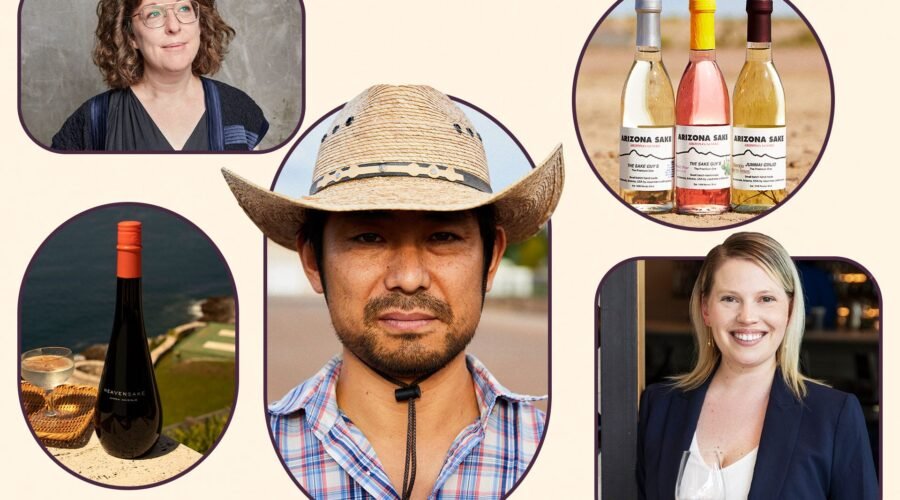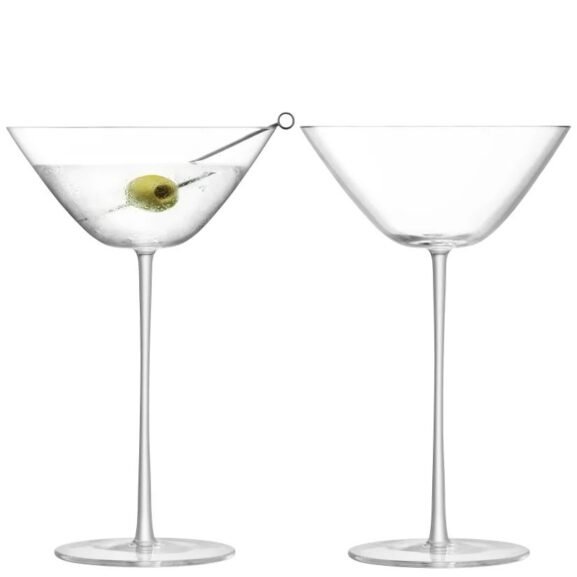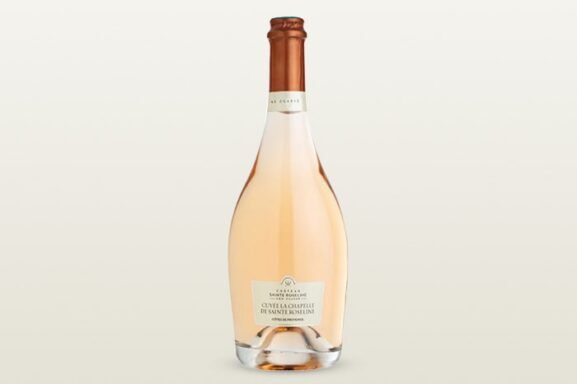Culture: Is Sake Finally Having Its Moment? A New Generation of Brewers Think So
Most of the servers at Ototo, a sake bar in Los Angeles, start their jobs with the same amount of sake knowledge as the average American—next to nothing. Ototo’s co-owner and beverage director Courtney Kaplan doesn’t see this as a hindrance, but rather, the reason why her team is so good at helping diners navigate a menu full of terms like junmai, honjozo, kimoto and nama genshu.
“A year ago, [servers] were in the exact same position as our guests, so they can speak on the same level,” says Kaplan.
For as long as sake as been imported and brewed here in the U.S., its technical aspects—the rice variety, polishing rate, water source, yeast type, fermentation method and more—remain difficult for many American drinkers to grasp. Sake has an accessibility problem in the U.S., and there’s a case that Kaplan’s service style at Ototo is an antidote. Her menu avoids much traditional terminology in favor of more tangible descriptions. She compares one bottle to grapefruit-flavored Lacroix and another to watermelon Skittles. “We want to make sake fun, and not intimidating or scary, because I think sometimes it can be a little stressful [to order],” she says.
The approach at Ototo is part of a broader movement to demystify sake for Americans. For Kaplan, getting guests to order an unfamiliar bottle of sake advances her ultimate goal—showing off just how dynamic and versatile the drink can be. But for Japanese brewers, it’s a potential solve for an existential problem. Sake sales in Japan have fallen every year since 1975. Younger Japanese drinkers tend to prefer wine, beer and cocktails. Exports mean survival.
“I’m seeing so much interest in what’s happening in the U.S. market from the Japanese brewing community,” says Kaplan, who won a 2023 James Beard Foundation Award for Ototo’s beverage program.
This hunt for new sake drinkers, in Japan and abroad, also coincides with an uptick in American sake breweries and a new generation of sake makers embracing boundary-pushing styles. Collectively, the efforts seem to be working. “I’ve heard so many times that now is going to be sake’s moment, but it has never really come to fruition,” says Kaplan. “But it does feel like 1701584286 there’s momentum in a different way than there has been in the United States.”
You May Also Like: Everything You Need To Know About Saké
The French Connection
It helps that sake producers are turning to production styles that draw inspiration from a category with which many Americans are already familiar—French winemaking. Like many American wine drinkers, sake brewers have long revered French winemakers, particularly those in Champagne and Burgundy.
Many operations source the prized short-grain rice Yamada Nishiki from grand cru-style rice fields and experiment with brewing styles that mimic the traditional method. These include Domaine Kurodasho, in Japan’s Hyogo prefecture, whose sakes are an explicit reference to Burgundy. Rather than listing standard technical details on labels, it shares information on terroir-informing soil types and microclimates. The brewery also owns Domaine Kuheiji, a winery in Burgundy. Meanwhile, Kenichoro Kojima, a toji (head brewer) for historic sake producer Toko in Yamagata Prefecture, studied winemaking in Burgundy. He uses his French training to create the Burgundian-style sake Ultraluxe Junmai Daiginjo, which is described as mineral-driven and precise.
The admiration between sake and wine producers goes both ways. Although production methods are drastically different, winemakers are finding inspiration in the dedication and attention to detail required to make sake. In his role as chef de cave of Piper Heidsieck, Regis Camus visited Japan more than 20 times. “I fell in love with Japanese culture and also with their drink,” he says. “Sake was such a discovery for me.”

Nearing retirement, Camus decided to take up a new challenge and join Heavensake as master blender and chief collaborator. As he would for a wine, Camus combines batches to find the precise balance of minerality, floral character, fruit, alcohol and silkiness that define Heavensake’s house style. “The most validating part is when the toji participates in the assemblage, when they’re inspired by the exercise and suggest adjustments,” says Camus, who has worked with tojis at noted sake outfits Dassai, Urakasumi, Hakushika, Konishi and, most recently, Tatenokawa.
Japanese breweries have practiced blending since at least the Edo era, but not as openly or as explicitly as Heavensake and other brands, including Francois Chartier’s Tanaka 1789 X Chartier and IWA from former Dom Perignon chef de cave Richard Geoffroy.
“Heavensake is a wine-like experience with sake DNA,” says Laurent Cutier, the brand’s former chief operating officer. “It’s the fact that Japanese brewers have a respect for Champagne and for Regis that allowed us to get started. Now, with our success in the U.S. and in fine dining, [our brewer collaborators] see the ability to open new doors.”
You May Also Like: How to Drink Sake, According to Pros
Young Brewers Embrace Craft Sake
The movement back toward artisanal production, driven by a younger generation of Japanese brewers, has also been a major boon to the nation’s sake industry and products’ appeal overseas.
When Norimasa Yamamoto took over his family’s Heiwa Shuzo brewery in the Wakayama prefecture 20 years ago, he steered production away from the mass-produced sake of his father’s generation and back to hand-crafted sake. Yamamoto also established year-round brewing, which attracted top graduates from the elite Tokyo University of Agriculture.
Now, the average age of Heiwa brewery workers is 32. “When you’re drinking our sake, you can feel their energy,” says Yamamoto, who won the International Wine Challenge Brewer of the Year in 2019 and 2020. “I love working with [younger brewers] because they always come up with new ideas, new recipes, new products.”
Yamamoto grows a portion of Heiwa’s rice. His team experiments with yeast strains and produces doburoku, a creamy, unfiltered, low-alcohol form of sake once banned in Japan. “Heiwa is really the vanguard of sake now,” says Leo Lê, beverage director of Momoya in New York City, who sells a case of Heiwa “Kid” Junmai Sake each week. Heiwa and other operations like it, Lê explains, represent a reversal of post-WWII industrial sake making. Their sakes also mark a clear departure from super-premium ginjo and daiginjo style sakes, whose brewers chased lower and lower rice polishing rates.
“There’s lots of innovation,” says Kaplan, citing barrel aging, isolating yeast from wildflowers, a revival of heirloom rice varieties and more frizzante, Pét-Nat-like sakes. “A lot of breweries are trying to create products that will appeal to a younger audience that perhaps has a different palate than their parents did.”
You May Also Like: Want to Get Into Sake? Try These Expert-Approved Bottles
Limited Licenses Disperse Brewers
Still, as exciting as new-school sake is, in Japan there’s a limit to who can make it. Since the beginning of sake’s descent in the 1970s, the Japanese National Tax office has declined to issue new brewery licenses, with the relatively new exception of export-only breweries. Essentially, to own a sake brewery in Japan means buying someone out or inheriting one—or leaving the country entirely.
“It’s kind of anti-constitutional,” says Atsuo Sakurai, founder of Arizona Sake in Holbrook, Arizona. “Japanese people have a right to start their own business, but the business of sake is regulated by the establishment.”
After a decade working in sake production, Sakurai knew that the Japanese system, where even homebrewing is illegal, would block him from opening a brewery. In 2015, he finally settled in his wife’s hometown in Arizona, where started his business. To his surprise, the bone-dry climate prevented microbial contamination that so many brewers fight in humid Japan, and local water combined with American-grown rice yielded award-winning sake.
“It’s still small production and all handmade,” says Sakurai. “I’m working year-round to catch up with the demand.”
Sakurai isn’t alone in his success with crafting sake outside of Japan. Chiaki Takahashi and Tama Hirose, both industry veterans in Japan, opened Islander Sake in Honolulu in 2020 and quickly filled a niche for locally brewed sake. Plenty of others have followed across the U.S.
You May Also Like: In Sake, Sustainability Is a Time-Honored Tradition

The Rise of American Makers
Sitting down in the original tasting room of Brooklyn Kura would feel familiar to any craft beer devotee. Just above a set of taps, a window into the brewery frames a set of stainless-steel fermentation tanks. But Brooklyn Kura’s medium is rice, rather than barley. In the koji room, co-owner and toji Brandon Doughan propagates the mold responsible for converting rice’s starch into sugar, which yeast then gobble up to make alcohol. Opening up those fermentation tanks releases a burst of tropical fruit aroma, a hallmark of koji fermentation.
Although large-scale sake breweries have been around in California since the late ‘70s and early ‘80s, most are subsidiaries of Japanese companies. In contrast, Brooklyn Kura, Arizona Sake and Islander Sake belong to a cohort of roughly two dozen independent craft sake breweries in the U.S. that are carving out a new niche for American drinkers.
These new-school, American craft brewers understand that to survive, they must educate these consumers. “The challenge that affects every corner of the sake industry is low consumer knowledge,” says Weston Konishi, president of the Sake Brewers Association of North America. “Related to that is creating a viable business, where supply meets demand. That’s been tricky for lots of our producers, but I’m pleased to say that most of them are working that equation out.”
Doughan and partner Brian Polen opened Brooklyn Kura in 2018, specializing in unpasteurized nama sake, a rarity even in Japan. With investment from Japanese brewery Hakkaisan, they recently expanded to a 20,000-square-foot facility with greater automation, which will enable them to pasteurize bottles and therefore achieve wider distribution. They’ve hired Timothy Sullivan, a sake samurai and host of the Sake Revolution podcast, as director of education for an in-house Sake Studies Center. In addition to teaching the drinking public, says Doughan, the goal is to train beverage professionals. “Sommeliers we train will go back to restaurants all over the world, and they will have all the sake knowledge,” says Doughan.
You May Also Like: Saké Food Pairings That Will Change Your Drinking Experience

Pushing the Category Forward
Another path toward better marketabilty is labeling. On opening night of Navy Blue, a seafood restaurant in Houston, wine director Molly Austad poured two sakes, both of which boast whimsical and aesthetically-pleasing labels with English-language branding. One was the umami-rich Mantensei Kinoko Junmai Ginjo, which depicts a cluster of wild mushrooms on its label. (Kinoko translates to “mushroom,” a famously umami-ful ingredient, in Japanese.) The second, Fukucho Seaside Junmai Sparkling Sake, features on its aqua-hued label a swimming octopus, fish and other marine life.
This is a departure from many traditional sake labels, which are frequently devoid of imagery and contain only Japanese text. “Faced with highly stylized, impenetrable kanji characters crawling across a label like ancient runes, would-be fans might, the argument goes, just give up on trying to get to know sake better,” tellingly wrote journalist Nancy Matsumoto in a Medium post in 2019.
The success of labels with Western appeal, often targeted for export, is especially apparent with Drunken Whale Junmai from Suigei Tokubetsu Brewery in Kochi, which displays a blue whale swimming on its label. It’s been a major success. Sales for the brewery have skyrocketed since the bottling was introduced, up more than 200 million yen (around $1.35 million USD) in 2021 compared to just 20 million yen in 2013. Kaplan, which stocks the sake at Ototo, says these sakes are well-suited to retail and are a helpful tool in the fight to win over Western drinkers.
Other brands are hoping to capitalize on this tactic, similarly tapping into accessible packaging and flavor combinations geared toward American palates. There’s L.A.-based Sawtelle Sake, made by brewer Troy Nakamatsu, which offers a Clear Skies jumai ginjo in picnic-ready cans emblazoned with modern, eye-catching branding. Nakamatsu and co-owner Maxwell Leer also produce The Pink Can, an aptly-named carbonated combination of sake, yuzu juice, hibiscus tea and Okinawan kokuto sugar. Also on offer is Super Drink, a tart, non-alcoholic, probiotic sweet amakaze sake made from koji-inoculated rice, which would look at home at a hip health food shop.
While Nakamatsu’s base brew has all the hallmarks of meticulous craft sake, Sawtelle wasn’t designed to emulate Japan’s multigenerational breweries. Leer spent four years serving as a liaison between Japanese brewers and importers, he says, trying to convince traditionalists to make products better suited for the American market. He failed, and then channeled his findings into Sawtelle.
“How do you grow half a percent of consumption to one percent? You have to get the people onboard,” says Leer. “Sake has been living and dying by [restaurant] sales in America for as many years as it’s been available. I don’t care if any sommelier likes this product ever. It’s not for them. It’s for people who want to drink cool shit.”
Japanese producers have a long, continuous history of experimentation, Konishi explains. “But they innovate within a certain set of parameters that [North American] brewers don’t recognize or acknowledge,” he says.
In Japan, seishu or nihonshu, the legal names for sake, can only be brewed with water, rice, koji and yeast. The Pink Can wouldn’t meet that definition, nor would the Pineapple Jalapeño Sake Spritzer from Ben’s American Sake or Arizona Sake’s line of infused sakes, including its Navajo tea and prickly pear flavors. But in America, no such restrictions apply. And with few preconceived notions of what sake should be, there’s room for all styles: modern, fruity flavor bombs and old-school offerings, force-carbonated cans and traditional-method bubbles. Sakes brewed in Nashville or back in Japan. For the first time in history, it’s all in America, waiting to be consumed.
“Sake is a world-class product that’s still relatively undiscovered in the American market,” says Konishi. “It hasn’t had its breakthrough moment yet. But we’re building momentum.”
Published: December 1, 2023


